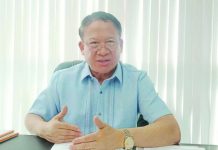
ILOILO City has long prided itself as a center of heritage, governance, and progress in Western Visayas. But with its population now at 457,626 — making it the second most populous highly urbanized area in the region after Bacolod City — a quiet demographic transformation is underway. The city is no longer growing primarily through births but through migration.
According to the Commission on Population and Development (CPD) Region 6 as reported by this paper over the weekend, the region’s population stands at 7,954,723, with migration now outpacing fertility as the primary driver of growth in many areas. In Iloilo City, this trend is especially pronounced. CPD-6 Director Harold Alfred Marshall noted that Iloilo City is becoming a “mixed bag” of people — not just from within the region but also from other parts of the country. It has become an urban magnet, drawing in individuals and families seeking better opportunities.
While such dynamism is often seen as a sign of economic vitality, it also demands a serious rethinking of urban development strategies. The influx of new residents places mounting pressure on housing, transportation, healthcare, waste management, and other essential services. Inclusive growth can no longer be an aspiration; it must become a necessity.
The rapid growth of Guimaras, which now has the fastest population growth rate in the region despite having the smallest population at 187,842, also tells a compelling story. Its rise is attributed to migration driven by tourism and land investment. But unlike Iloilo City, Guimaras is in the early stages of this trend — which gives it a chance to build sustainably. Iloilo City, however, must now adapt to the reality that it is already the destination of many.
The replacement fertility level in the region has fallen below 2.1 children per woman — the threshold required for stable population replacement. This means that internal migration, not natural births, will continue to drive growth, especially in cities that are perceived to offer better livelihoods. Iloilo City, therefore, must recognize that its future will be shaped by its ability to absorb, integrate, and uplift people from different backgrounds and economic levels.
Yet inclusive growth requires more than welcoming new residents. It requires a clear policy direction that prioritizes affordable housing for low-income families, livelihood opportunities for new entrants to the labor force, and accessible public services for all. If these are not addressed, the city runs the risk of exacerbating inequality, creating pockets of poverty, and overburdening its already stretched resources.
Director Marshall himself warned that without adequate infrastructure and sustainable policies, population growth could bring unintended consequences: more garbage, greater strain on services, and rising social tensions. As he bluntly put it, “The more people, the more basura. Gadamo man ang gamo.”
There is still time for Iloilo City to steer the tide in the right direction. But it must act now — with a planning mindset that understands migration not as a problem to fix, but as a reality to embrace with responsibility and vision. A truly inclusive Iloilo City is one that grows with its people, not apart from them.







